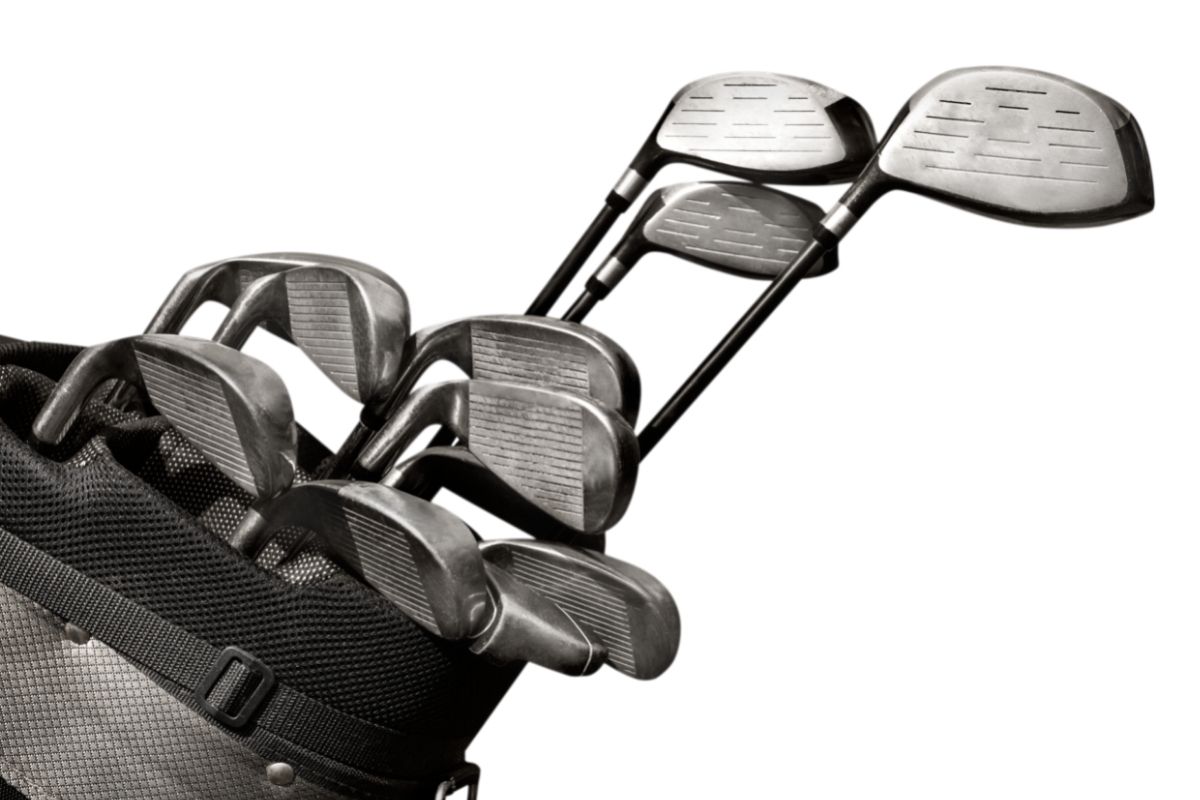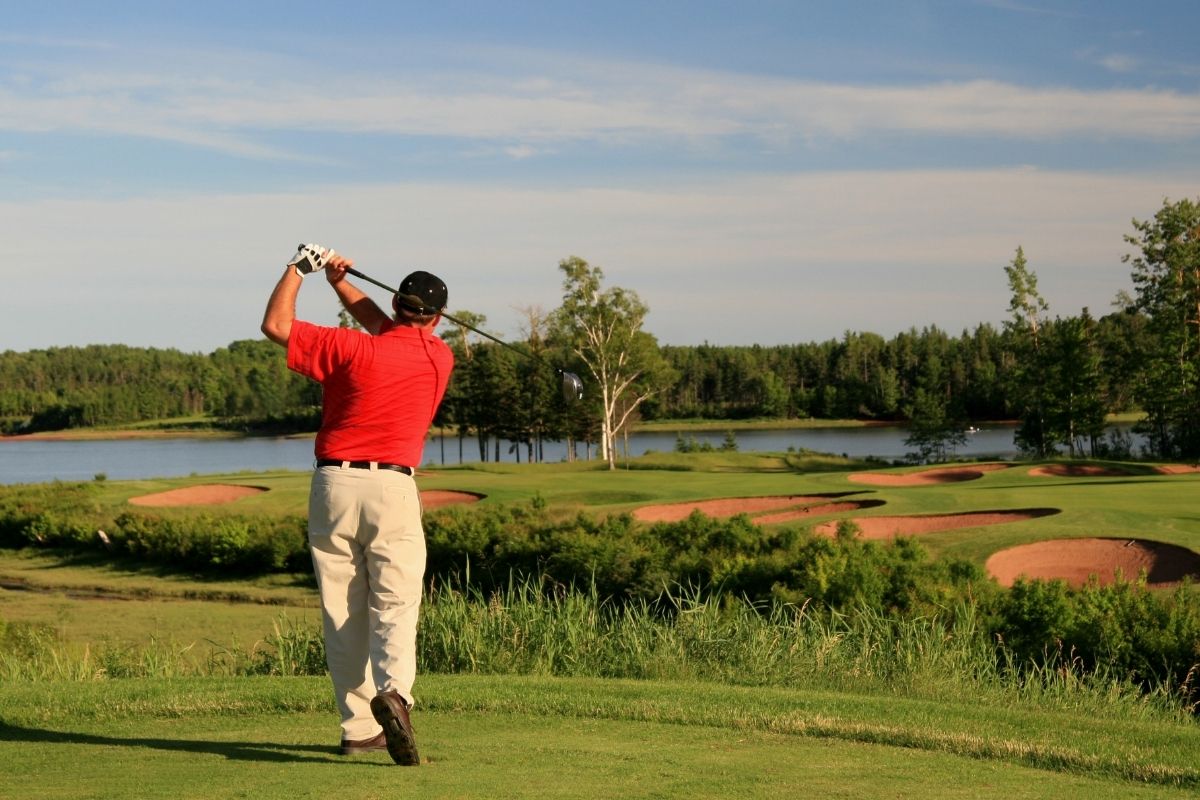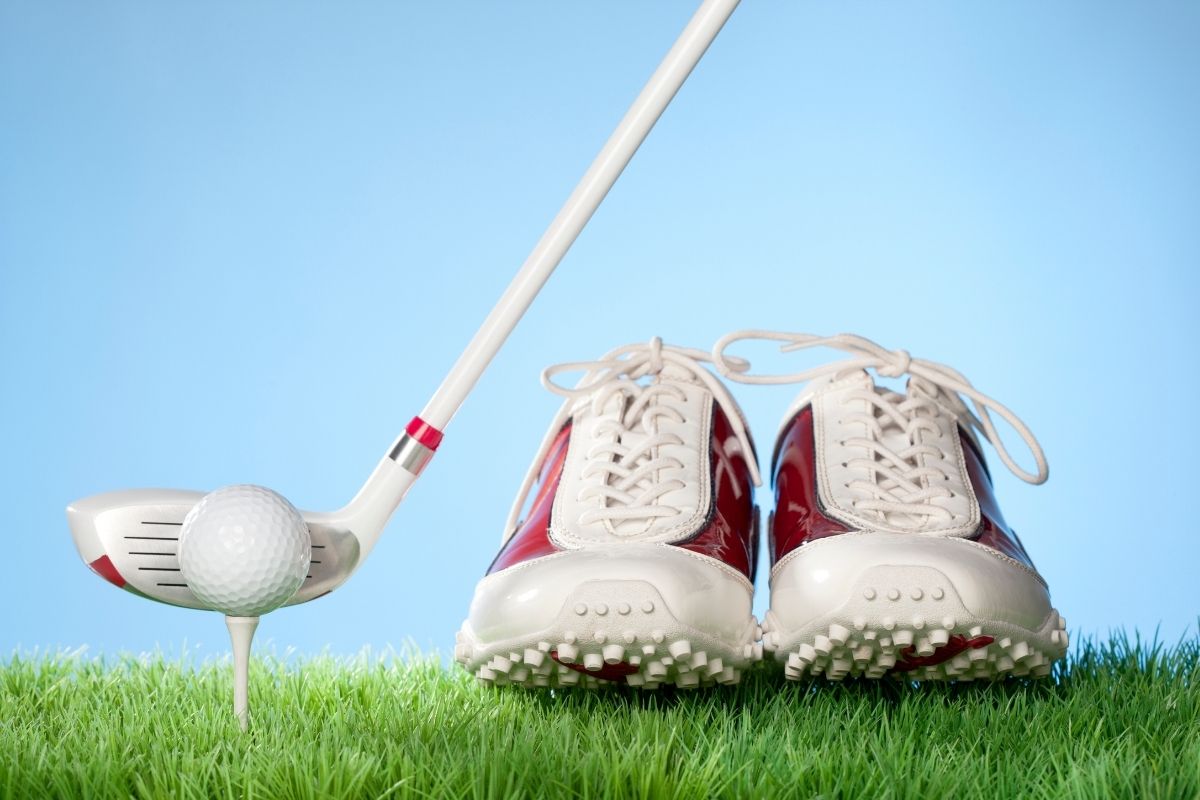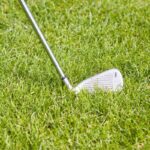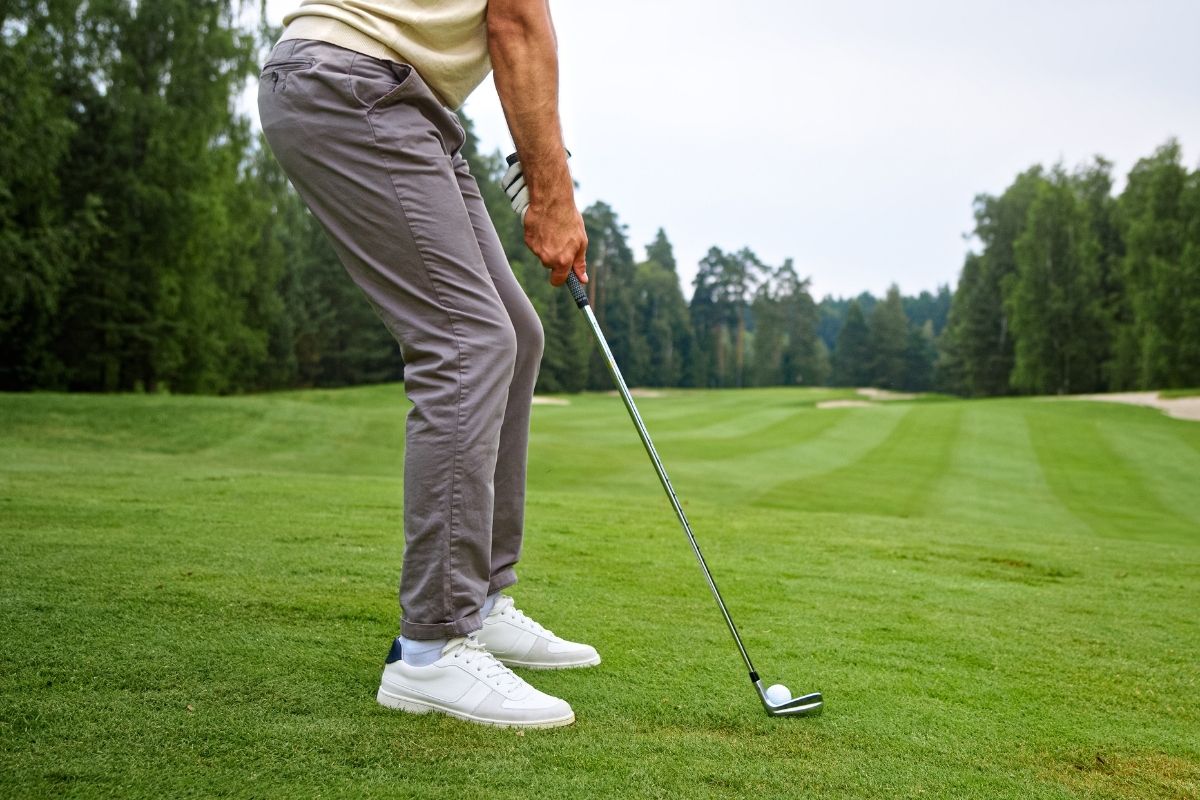We occasionally recommend products we love and might be paid a share of the sale.
The beauty of golf is the wide variety of swing styles and techniques players deploy. That there are several successful stances, alignments, and grips.
There are players with strong grips and those with weak grips among the greatest golfers in history. Some individuals favor the left and some prefer the right. All the greats have difference styles and reasons for how they hold the golf club.
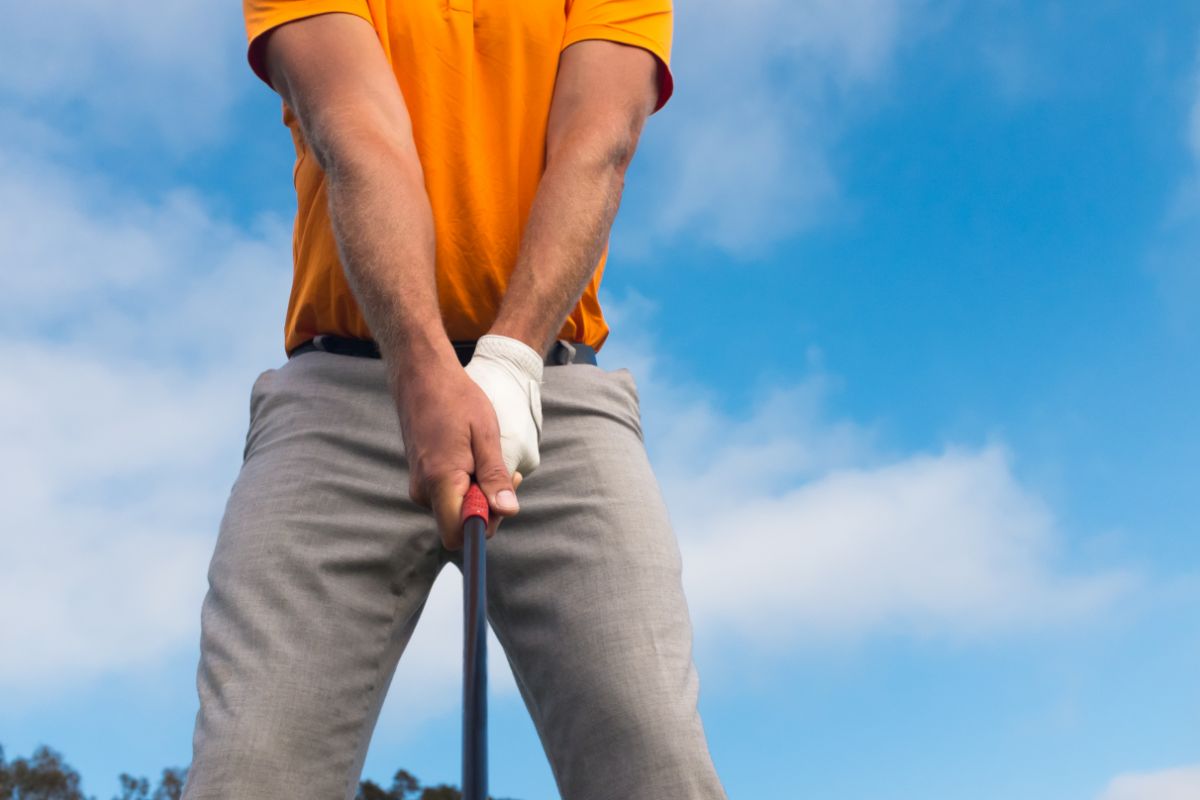
In the end, success may be accomplished with either a strong or weak grip on the club.
It depends greatly on your personal preference. It all comes down to your ability to control the start line, keep the club on the correct swing plane, and make solid contact.
There are advantages to having a strong grip on the golf club, and the objective of this article is to explain these advantages and provide tips on how to play golf with a strong grip.
How Does Grip Strength Affect Your Golf Game?
Your grip strength will have an immediate impact on your ability to manipulate the club. If you have a really strong grip, turning a club will be substantially simpler.
In contrast, a weaker grip makes it harder to turn your hands over and release the golf club. Both of these grips have benefits and drawbacks, and none is necessarily preferable to the other.
Understanding these nuances might help you choose the grip that best suits your game.
A strong grip will cause the left hand to be somewhat off-center to the right. Consequently, the right hand also ends up a little to the right of the center.
The right hand will appear to be slightly below or under the shaft of the golf club. When using a strong grip position, you can see the finger nails on your right hand’s fingers when looking down at your hands. You will also see more of the large knuckles on your left hand.
With a neutral grip, this will be straight down the center of the club, and you may only see the very tips of your right hand fingers depending on the size of your hands. Your hands will be centered on the club and your thumbs will be pointing down the shaft.
Your left and right hand will rotate to the right as your grip strength rises.
To get a weaker hand position, you must turn your hand to the left more. This causes your right hand to be significantly higher and over the club shaft rather than underneath the club.
You may need to change your grip dependent on the type of shot you’re aiming to accomplish, as the three grip strengths can create drastically different shot shapes.
The greatest advantage of a strong grip is that the club will be substantially easier to rotate. When the golfer’s hands are properly positioned beneath the golf club, it will be much easier for them to strike the ball in a straight line, even if they prefer to slice the ball.
A strong grip will benefit golfers who fight a fade or slide and aim to turn the ball slightly right-to-left. The vast majority of modern players appear to favor a strong grip. Providing golfers with control over their strokes is obviously useful.
A golf grip that is TOO strong might cause you to flip your hands too much and result in a hook instead of the draw you were hoping for.
Related article: Draw Vs Fade In Golf: The Differences And Tips For Each
Strong grips can also induce excessive hand and wrist involvement in golf swings. If this occurs, a player may lose a portion of the strength provided by their larger muscles.
How Does A Strong And Weak Grip Affect Impact?
Few golfers realize why grip strength affects impact so much. This is vital to understand since it will give you better control over your future golf shots.
Your arms and hands expand naturally outward. This is the position your arms and hands will naturally return to when impacting the golf ball.
A neutral golf grip is one in which both hands appear to be slightly bent over one another and rest atop the golf club since this is their natural anatomical position.
If you develop a strong grip, the club face will tend to be closed by the time your arms reach their natural position at impact.
If you establish a weak grip, the face of the club will tend to be open by the time your arms reach their natural position at contact.
What Are The Advantages Of A Decent Golf Grip?
When a golfer can see at least three knuckles on their lead hand, they have a strong grip. At address, a right-handed golfer should be able to see at least three knuckles on the left hand.
Usually, the right hand will rest lower on the club. Both hands are turned in a counterclockwise direction toward the back leg and up and over the right shoulder.
One of the goals of every swing is to control the launch point and curvature of the ball. Greater club face stability during a golf swing increases the chance of this happening.
The golfer can feel in a strong position to rotate back and through the ball with a solid grip, allowing the club to remain stable throughout the swing.
The simplicity and brevity of this stroke can produce more force and maintain control with higher swing speeds. The club face stability is critical for successful shots in golf!
Attack The Ball From The Inside To Hit Draws
If you ask any amateur golfer who suffers from slicing what their biggest golfing wish is, they would undoubtedly mention the ability to draw the ball.
The draw shot in golf has a certain visual appeal and simplicity. We are aware that it may be simple to execute and that it is the polar opposite of the fade or slice shot, which makes it extremely appealing to individuals battling the ugly, balloon-like slice shot with which many novices struggle.
With a strong grip, executing a draw requires less effort since the club face is more likely approach the ball from the inside and strike the ball squarely.
The club should be taken back along the target line and return on the down swing slightly inside the target line to hit a draw. The strong grip makes this motion easier while also helping to ensure a square club face at impact.
Usually Provides Greater Strength
The game of professional golf demands a certain amount of speed and strength. Data analysis has supported the significance of power in the golfing industry in recent years.
Although it is possible to hit powerful shots with a weak grip, the majority of golfers, particularly younger players and those who lack strength, will opt for a strong grip throughout the golf swing.
With the left hand rotated more clockwise, the golfer may impart more speed to the ball and release and use both hands during the stroke.
Even if the face is stable, there is still a release, and the stronger hand position, the easier it to generate speed and create solid contact at impact.
Numerous professional golfers modify their swings to avoid the hook shot. The majority of beginners, though, should default to a strong grip until they reach the level when they must battle the hook shot.
Even so, they may still be able to retain a stronger grip if they rotate through the stroke and minimize club head rotation. The combination of a solid grip, a correct backswing turn, and the following shot turn is difficult to resist.
How Important Are Strong Grips In Golf?

Have you been told to “strengthen your grip” before? Someone may have stated, “Your grip is too weak,” but they are not suggesting that you hold the club more or less tightly.
They refer to the direction in which your hands are placed on the club. Among other things, this can have an immediate effect on the shape and height of your shots.
Strong, neutral, and weak grips are the three varieties. All of these grip types have been utilized by great golfers; it is simply a matter of choosing the one that will work best for you.
When the ‘V’ shapes made by your thumbs and hands point to your right shoulder, you have a strong grip. Typically, this is how suggest new players hold the club.
A golfer who hits the ball too high and/or hits tends to slice the ball may benefit from a strong grip. This particular grip promotes an in-to-out swing and a more closed clubface upon impact. This grip makes it easier to execute right-to-left spinning strokes.
Consider strengthening your grip if you suffer from slicing and weak fades regularly.
Five Tips For A Strong Grip
Maintain Your Grip With Your Fingers
Regardless of the golf swing grip you choose, it is crucial to maintain a firm grip on the club with your fingertips. Keeping the grip in the hands enables optimal hand function and maximizes speed.
Consider a pitcher throwing a baseball; the only time he places the ball deeper in his hand is when he is trying to reduce velocity.
The goal for most golfers is to create sufficient speed. Golfers must train and practice to increase their speed. Maintain simplicity and gripping the club in your fingers will help you maximize your athletics and agility.
Speed Training
Speed training is the key to attaining lower scores, it is vital to practice regardless of your grip. Regardless of your current skill level or swing speed, we may all benefit from improved velocity.
This speed training will also help you improve your swing mechanics. It is worthwhile to examine regardless of one’s degree of expertise. The modification to your swing mechanics and the increase in distance will improve your game!
This can all be accomplished in your backyard. Simply adequate space is necessary for golf club swings. This is the pinnacle of at-home training, and you will see fast results. You are equipped with a radar to track your progress!
Regardless of the current state of your game, we all seek better velocity. It is clear that the golf swing demands speed, and there are strategies to increase speed! All levels of golf analytics indicate the significance of speed and increased speed in decreasing scores.
Rotate Through The Shot
The key to playing golf well is maintaining a steady swing. A shot in which the starting line is identical at least seven times out of 10. Regardless of whether your standard shot is a draw or a fade, the most important thing is to be able to execute a dependable shot.
You may develop self-assurance and rely on it throughout difficult situations.
Squat And Turn
Too many golfers shift their hips forward because it may feel more natural. Sitting and turning is much more important if you have a strong grip. This helps to stabilize the club face.
If you struggle with hook shots, consider moving your hands into a more neutral position. This will enable you to eliminate premature release and stabilize the club face.
Keep Your Hands Back
From the top, there is a tendency to exert powerful downward pressure. This appears intimidating as the golfer tries to gain pace.
During the shot, you may achieve a whip-like motion if you can maintain your hands at the top for even a second while your body begins to descend and rotate.
It aids in maintaining an inside path for the arms and stabilizes the club throughout the stroke by rotating through the ball.
The bulk of golfers are in search of consistency. Consistency in golf may be achieved by maintaining a strong grip, bring the club back smoothly, and pausing the hands at the top of the backswing for split second.
What Kind Of Grip Should I Play With?
Golf swings and grips are as unique and varied as the different people that play this crazy game. It’s important to feel comfortable and confident in your grip and stance at address.
If your ball flight tends to curves from left to right in the air (fades and slices), the simplest and most efficient way to improve your golf swing mechanics and ball flight are to strengthen your grip by two to three degrees.
Similarly, a strong left or right-hand grip might be why some players are grappling with a hook. In most cases, weakening one or both hands will straighten the flight of the ball.
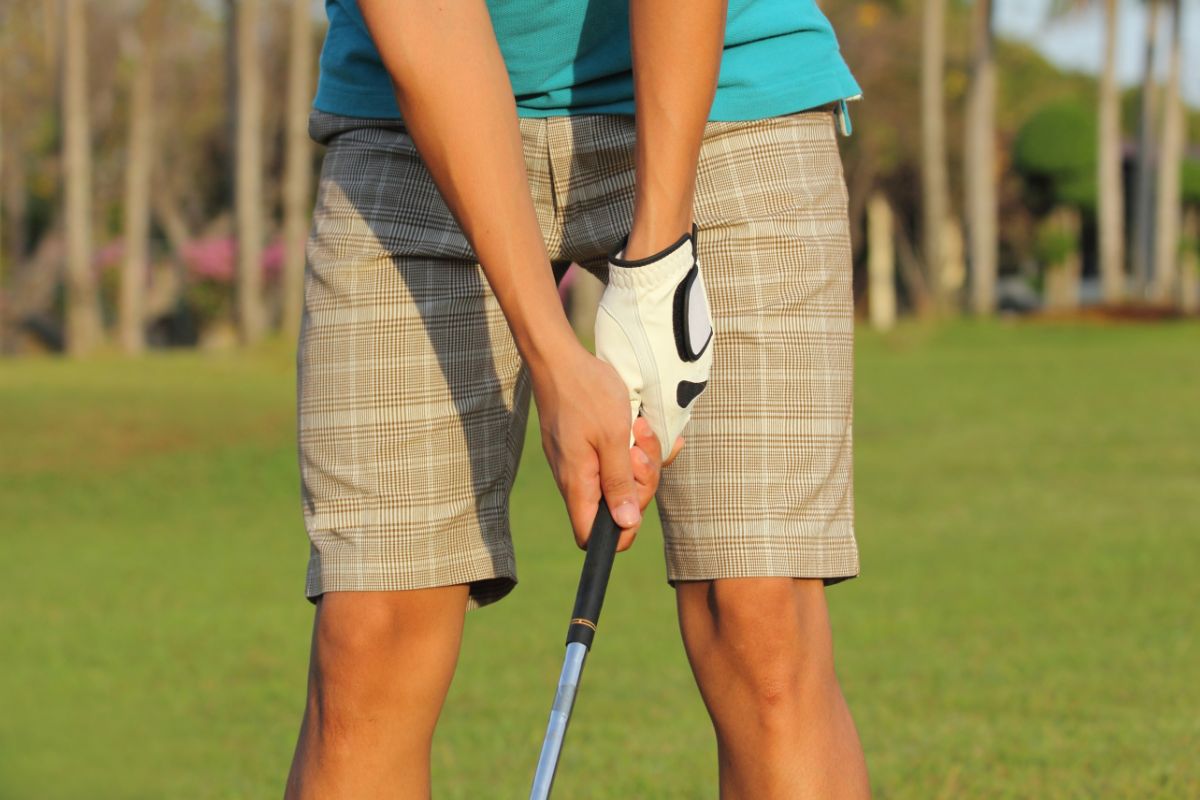
Final Thoughts
We hope that our descriptions of these different golf grips have helped you determine the ideal option for your game.
Despite the prevalence of grip-related jargon, very few persons genuinely grasp the link between grip strength and the outcome of a game.
Attempt three alternative grip strengths and watch how they affect your ball flight. You will certainly end up someplace close to neutral, but you will learn a great deal about golf.
The more you toss your hands or release at impact, the more variety you will see in your shots. Learn to keep your swing stable and rotate your whole body rather than rely on your wrists and hands to shape the ball flight.
Concentrate on the three fundamentals of golf: consistently striking the ground in the same spot, controlling your start line, and rotating your hips and shoulders
The grip can influence the club’s face and the path of the swing. It may be advantageous to understand your swing path and club face orientation upon impact. Even amateur golfers have access to this technology and data with the availability of modern technology.
Professional golfers of today have access to cutting-edge equipment, such as launch monitors for tracking their swing and obtaining statistical information.
Even if you don’t develop an indoor golf simulator, you can still acquire a launch monitor for a cheap price to use in your indoor net or to go to the course or driving range!
Understanding vital data such as spin rate, ball speed, and spin axis is crucial to your growth. Sharing these numbers with your instructor might be valuable and helps in equipment selection.
Frequently Asked Questions
What Is A Neutral Grip?
A neutral grip has the ‘V’ shapes pointing upwards toward the nose. This grip is ideal for players who hit the ball generally straight or like to shape golf shots in both directions.
This grip is ideal for golfers who have good swing mechanics and don’t suffer from excessively off-center shots.
What Is A Weak Grip?
Weak grips have the ‘V’ shapes of the hands pointed to the left shoulder. This sort of grip would facilitate an out-to-in swing and a club face that is more likely open at impact.
By promoting a delayed club face closure upon impact, a weaker grip can benefit golfers who struggle with hooked shots. This grip may also help counteract an abnormally inside swing.
Consider weakening your grip if you tend to hook the ball and analyzing the effects.
Understanding how each grip impacts your performance is crucial. It is quite common for a player’s grip to become excessive in one direction or another, leading to incorrect strokes.
What Is The Best Grip For Seniors?
Typically, senior golfers prefer a somewhat stronger grip.
The strong grip can offer players a firmer feel of the club and assist them in achieving the required ball speed for success.
What Is The Best Grip For Juniors?
Juniors typically find that a stronger grip provides them with more club control and encourages and inside out swing path.
Juniors learning the game for the first time must develop control in order to execute effective golf shots. A stronger grip is often the best way to start when learning, but a neutral grip is best in the long term.
Can Grip Strength Affect Your Slice Or Hook?
Your grip strength may have a significant influence on the direction of your golf strokes. Occasionally, your grip strength is the primary cause of your slice or hook.
Professional golfers will tell you that when they see a flaw in their golf swing, grip and posture are among the first places they go to improve it.
If your grip and posture are incorrect, it will lead to additional issues with your golf swing, resulting in a slice or hook. Simply correcting these setup and posture faults can result in a substantially improved golf swing.
What Level Of Grip Strength Is Best?
The best golf grip will be a neutral grip. The neutral grip permits optimal hand and total muscle involvement throughout the swing.
The neutral grip facilitates the execution of straight, lofted golf shots. It will also enable a player to shape the ball in both directions more easily as their skills advance.
If a player has trouble with the neutral grip, the strong grip is usually the next best option. The weak grip is not recommended as frequently since most amateur golfers tend to fade or slice the ball.
Does Speed Affect Your Grip Strength?
When your golf grip is strong, you have a stronger hold on the club. This allows players to strike the ball further.
If you want to increase the clubhead speed, you should employ a strong grip.
Is It Easy To Change Between Strong And Weak Grip Strength?
Once the distinction between the strong and weak grip is understood, switching between them is straightforward. However, most golfers have difficulty changing their grip. It requires a lot of practice and time to get comfortable and confident with a new hand position.
To avoid this, simply practice a grip that you can successfully repeat. If you can achieve this, you will have no difficulties.
Do Weak Grips Cause Shanks?
An excessively weak golf grip often results in a slice and can produce a shank as well. Unfortunately, a golf shank can be produced by a multitude of circumstances; therefore, you cannot assume that your grip is to a fault. Strong grips can just as easily cause you to hit the ball off the hosel.
Experimenting with several grip techniques to determine if this eliminates the shanks is the best plan of action.
Alternatively, when the dreaded shanks arrive, one of the best options is to leave the golf course and return the following day.
- Funny Golf Terms - February 21, 2023
- How To Play Vegas Golf Game - February 16, 2023
- How To Play Wolf Golf Game - February 16, 2023

